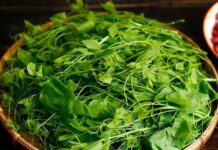1. Waterlogged and Rotten Vegetables
It is best to immediately discard vegetables that show signs of waterlogging, rot, or slime as they are usually teeming with harmful bacteria and contain substances that are not good for your health.
2. Dried-out Citrus Fruits
Many people tend to stock up on lemons and kumquats for family use, and sometimes the citrus fruits dry out and their skins harden. It is best to discard them as well. Such dried-out fruits no longer contain much juice, and they can even produce harmful mold or stain your refrigerator.
3. Dry and Wilted Ginger
If the ginger looks dry and its skin is wrinkled, it is best to discard it. The components of the ginger root have likely altered, and it is no longer beneficial but may even have a negative impact on your health.

Discard Wilted Ginger
4. Opened and Long-Stored Condiments
For canned and bottled condiments typically stored in the refrigerator, such as tomato sauce, mayonnaise, Tabasco, and mustard, even if they are not past their expiration date, it is best not to keep them too long after opening. Usually, when stored for an extended period, these foods will separate into two parts, with a thin liquid on top, and they will also lose their original flavor and may harm your digestive system.
5. Food Stored in the Refrigerator for Too Long
Storing fresh or cooked food in the refrigerator for too long is not advisable. In reality, their nutritional components can change after just a few days.
Their quality will no longer be the same as when they were fresh, and they can produce harmful bacteria.
6. Moldy Food
Fruits and vegetables, even when stored in the refrigerator, can develop mold. In this case, do not rinse or cut off the moldy parts and use the rest. It is best to discard them immediately, as keeping and consuming such food can lead to a buildup of toxins in your body and may even cause food poisoning.
The Ultimate Guide to Restaurant Staff: Mastering the Art of Distinguishing Salt and Pepper Shakers with Ease
The salt and pepper shakers on the tables of upscale restaurants and resorts often bear a striking resemblance to one another. It can be a challenge to differentiate between the two at first glance. However, with a few simple tricks up your sleeve, you’ll never mistake one for the other again. Stay tuned to uncover the secrets to becoming a seasoning-identifying pro!



































